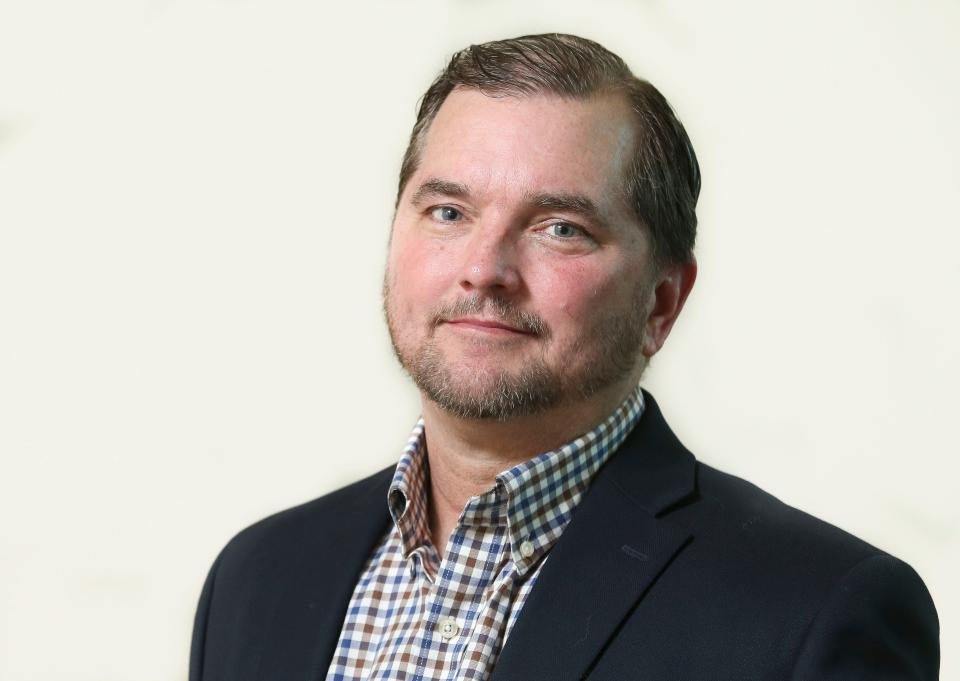Pay for college athletes could be on the horizon: Will the NCAA crumble? | Goodbread
- Oops!Something went wrong.Please try again later.
We interrupt your regularly-scheduled NIL news programming to offer a break from reports of the speeds at which the runaway train of college sports is traveling, and instead offer a glimpse of where the track might take it.
The date is Sept. 26, 2024.
In Tuscaloosa, the Alabama football team will have just wrapped up a three-game non-conference stretch at Wisconsin. But out West, in the U.S. District Court for the Northern District of California, something far more important than any game will be at hand. That's the day the House vs. NCAA trial is set to begin, and where the NCAA amateurism model that was cracked by NIL might begin to crumble entirely. In time, House vs. NCAA could easily become as well-known as the cases of O'Bannon vs. NCAA and Alston vs. NCAA; the third and final courtroom wrecking ball to demolish the way things used to be.
While the headline complaint in House vs. NCAA does pertain to NIL – it seeks damages for college athletes who couldn't benefit from NIL prior to 2021, and will attack the NCAA's restriction on use of NIL as a recruiting tool – there are larger potential ramifications in the finer print. Specifically, it also contends that college athletes should be paid from television broadcast revenues.
And a heaping slice of the TV pie for athletes could make the impact of NIL look like a pond ripple.
SABAN'S 15: Celebrate Nick Saban's 15 epic seasons at Alabama football with our special book!
REBUTTAL: Nick Saban responds to accusations of Alabama football tampering with Tyler Harrell
SEC Commissioner Greg Sankey is well aware that further fundamental change could be awaiting the NCAA on the other side of the NIL explosion. On Monday, he referenced the treacherous footing the NCAA could face in future court battles.
"(We) had a Supreme Court decision that was very specific to educational benefits and expenses," Sankey said, referring to the Alston case, "but also included some language in a supporting opinion that was Justice (Brett) Kavanaugh's, with some clear guidance about antitrust law. We have to adjust based on those outcomes."
In that opinion, Kavanaugh took a sledgehammer to the NCAA's amateurism model as a whole, and all but alerted future antitrust action, like the House case, that the NCAA is ripe for yet another legal comeuppance.
"It is highly questionable whether the NCAA and its member colleges can justify not paying student athletes a fair share of the revenues on the circular theory that the defining characteristic of college sports is that the colleges do not pay student athletes," Kavanaugh wrote amid a four-page opinion.
The key word in that passage is revenues. Kavanaugh isn't talking about NIL money. He's referencing the entirety of the NCAA cash cow: TV deals, ticket sales, merchandising – all of it. Just three months ago, the SEC distributed $777.8 million in revenue to its 14 schools; NCAA-wide, we're talking billions.
Long-term, college athletes are coming for the NCAA's vault, not its wallet.
And oh, by the way, the House case is being heard by U.S. District Judge Claudia Wilken, who also presided over the NCAA's losses in the O'Bannon and Alston cases.
The NIL ride has been a fast one, yes.
But the train is only getting faster, and it's going somewhere we've never been.
Reach Chase Goodbread @cgoodbread@gannett.com. Follow on Twitter @chasegoodbread.

This article originally appeared on The Tuscaloosa News: House vs. NCAA case could be far more impactful than NIL

